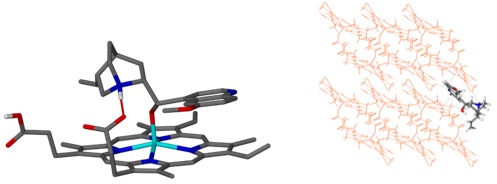Antimalarial drug design and development
Research Fields
Bioinorganic chemistry (malaria, hemozoin, β-hematin), physical chemistry (kinetics, adsorption), In silico modelling
Research Highlights
- First single crystal X-ray diffraction structures of heme-drug complexes
- Method to investigate kinetics of lipid-mediated β-haematin formation
- Development of in silico method to investigate drug adsorption
Research Summary
The focus of the Bioinorganic research group (Haem Team), is the inhibition of malaria pigment (haemozoin) formation by antimalarial drugs. Ferriprotoporphyrin IX (haem), released during the parasite’s digestion of haemoglobin, exerts a toxic burden on the parasite and is usually disposed of via bio-crystallization as haemozoin crystals. Antimalarial drugs such as chloroquine and quinine have been shown to disrupt this detoxification pathway, either via complex formation with haem in solution or direct adsorption to crystal surface(s). We use insights from multidisciplinary studies to inform the rational design of new chemotherapeutic compounds, which are required urgently owing to parasitic resistance.
Applications of Research
- Transferable in silico method to probe direct adsorption
- Analysis of chemical space for antimalarial drugs
- Rational drug design

Katherine de Villiers
Senior Lecturer
kdev[at]sun.ac.za
+27 21 808 2741
facebook.com/haemteam

